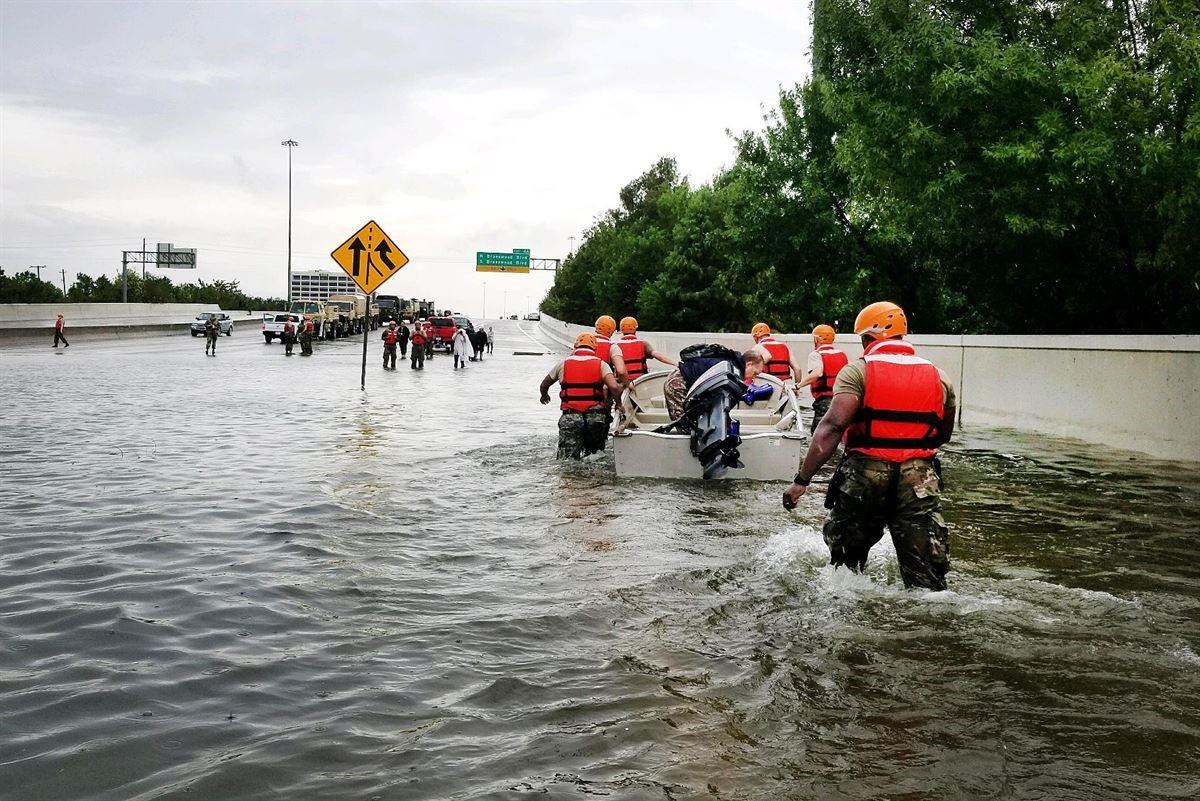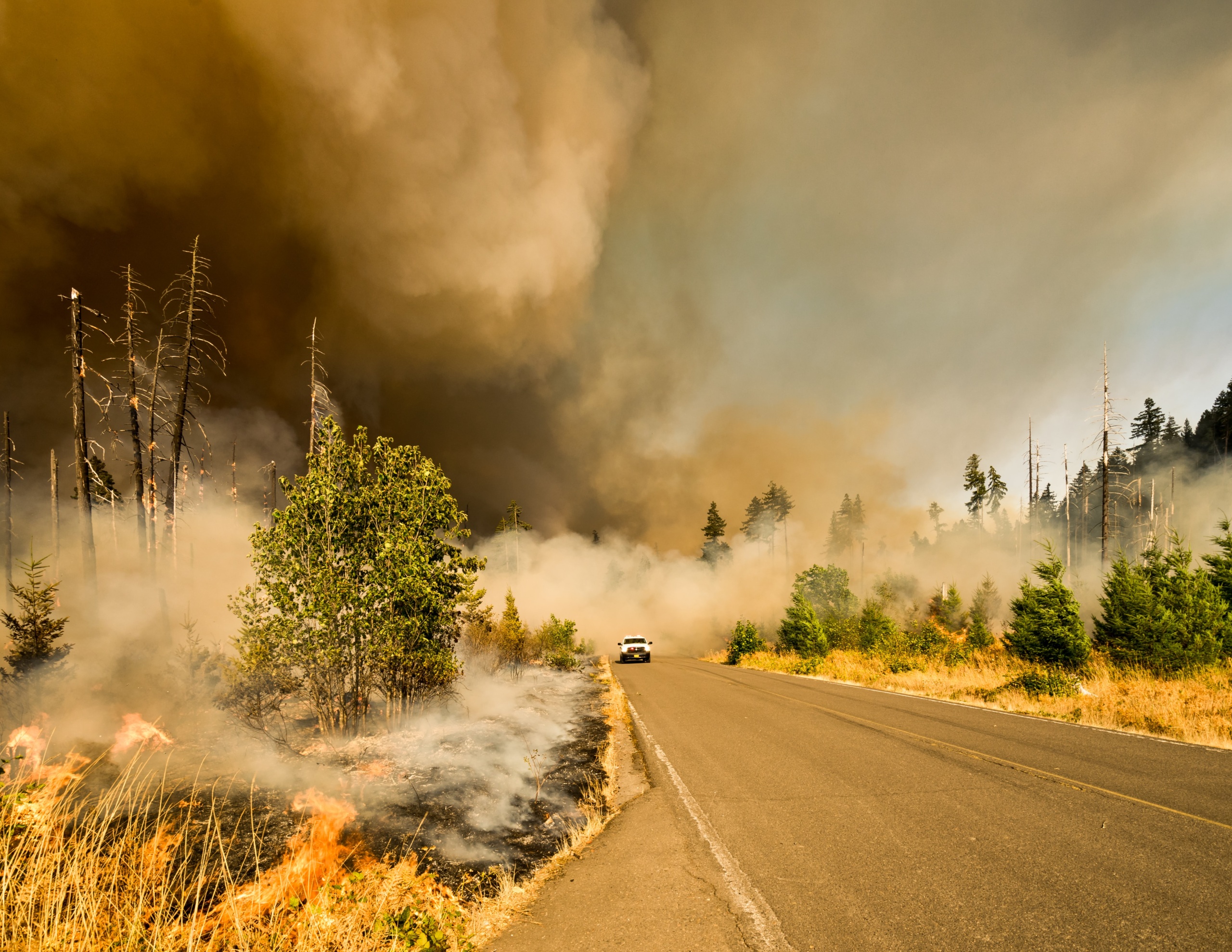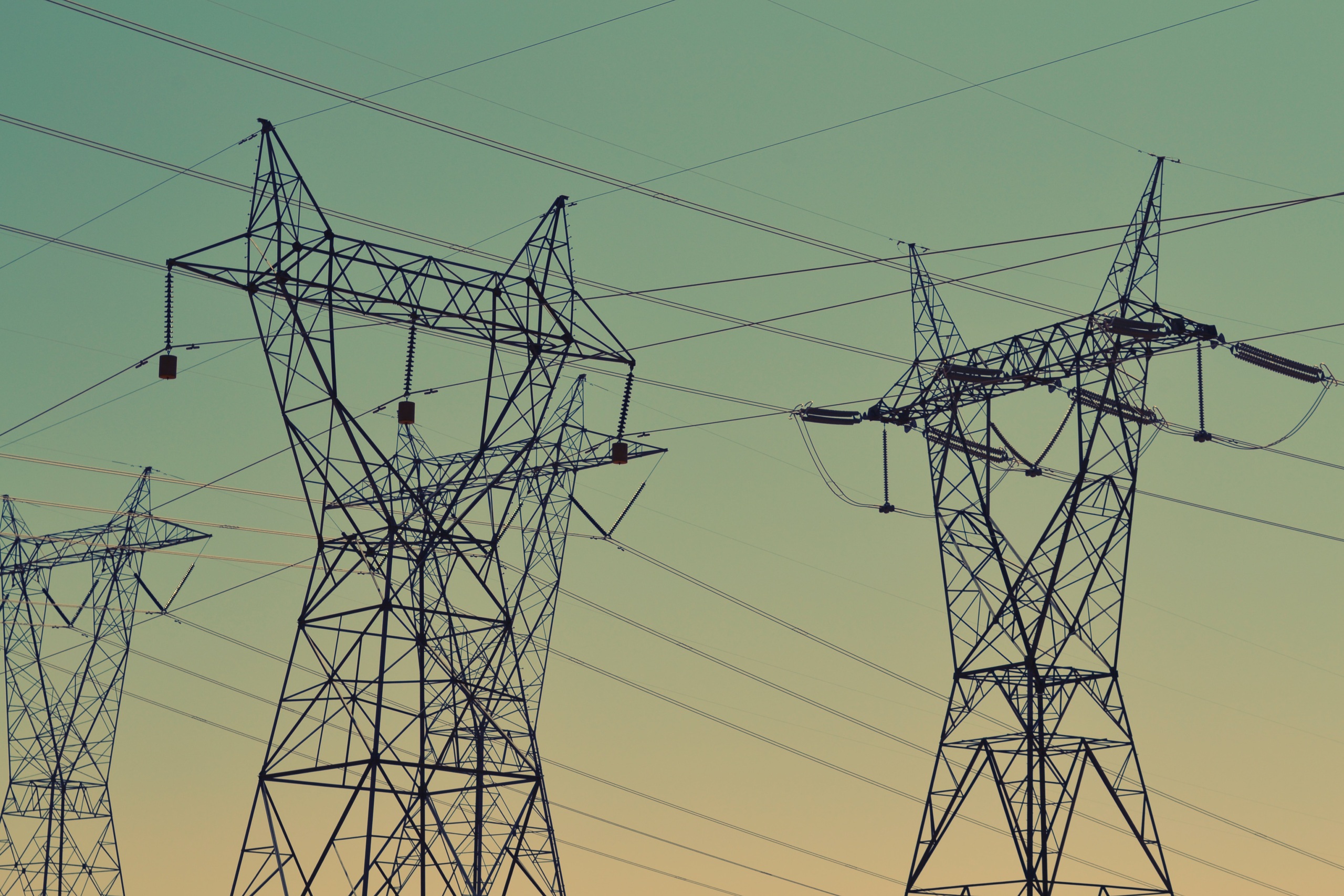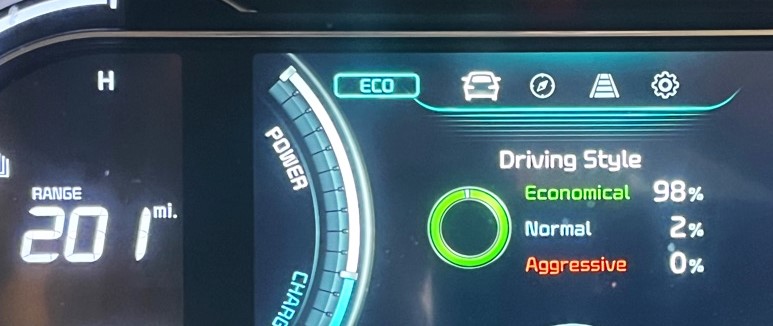Resources for Understanding Hurricane Harvey
Hurricane Harvey and its aftermath touch on numerous issues that have been the focus of Frontier Group research over the years. The following is a list of Frontier Group resources that may be useful to the public, the media and policy-makers seeking to make sense of the disaster.
Hurricane Harvey has pummeled the coast of Texas and Louisiana and inundated parts of Houston with at least 50 inches of rain. Texas Gov. Greg Abbott has labeled Hurricane Harvey “one of the largest disasters America has ever faced.”

Texas National Guardsmen in Houston conducted rescues by boat in days following Hurricane Harvey’s landfall. Credit: Department of Defense.
The hurricane and its aftermath touch on numerous issues that have been the focus of Frontier Group research over the years. The following is a list of Frontier Group resources that may be useful to the public, the media and policy-makers seeking to make sense of the disaster.
Extreme Weather Events and Global Warming: Global warming is anticipated to increase the frequency and severity of certain extreme weather events. Our 2010 report with Environment America Research and Policy Center, Global Warming and Extreme Weather: The Science, The Forecast, and the Impacts on America, explored the linkage between global warming and extreme weather events such as hurricanes, and showed that extreme weather disasters are a regular occurrence across the United States. More recently, we partnered again with Environment America Research and Policy Center to produce an online map showing weather-related disasters in the United States from 2010 to 2015 and telling the stories of the people and communities who have endured some of those weather events.
Contact(s):
– Tony Dutzik, 617-747-4331, [email protected], @FrontierTony
– Alana Miller, 303-801-0572, [email protected], @alana_miller13
Extreme Precipitation and Global Warming: Among the expected consequences of global warming is an increase in the frequency and severity of extreme precipitation events, fueled by increased evaporation and the ability of a warmer atmosphere to hold more moisture. Our 2012 report with Environment America and Policy Center, When It Rains, It Pours, documents the increases in both frequency and intensity of downpours across the United States over a 50-year period, and discusses what we can do to reduce the global warming that is driving these drastic changes in our weather patterns.
Contact(s):
– Travis Madsen, Environment America, 303-573-3871 x383, [email protected], @Travis_Madsen
– Tony Dutzik, 617-747-4331, [email protected], @FrontierTony
Green Stormwater Infrastructure: Flooding has brought significant damage to Texas in recent years, exacerbated by continued development across the state and the growing threat of climate change. In our 2017 report with Environment Texas, Catching the Rain, we look at how green stormwater infrastructure can help mitigate flooding and protect water quality across the state (a Houston fact sheet can be found here). While green stormwater infrastructure would not have prevented the extreme flooding caused by Harvey, it can play an important role in limiting the damage from future heavy precipitation events.
Contact(s):
– Luke Metzger, Environment Texas, 512-479-0388, [email protected], @lukewmetzger
– Elizabeth Berg, 617-747-4312, [email protected], @ejberg7
Special Districts and Land Use: Municipal Utility Districts, or MUDs, are a kind of special district sometimes used by private developers to fund new residential construction by selling tax-exempt bonds. Texas, and the Houston area in particular, have numerous MUDs, but as covered in this piece at The Overhead Wire, this can mean trouble when it comes to designing infrastructure that can stand up to extreme weather. In our 2017 edition of Following the Money with U.S. PIRG Education Fund, we take a look at the fiscal transparency of special districts, including MUDs, and review their history and role in governance.
Contact(s):
– Michelle Surka, U.S. PIRG, 617-747-4386, [email protected], @MichelleSurka
– Rachel Cross, 303-573-5995 x340, [email protected], @online_rachel
Oil and Gas in the Path of a Hurricane: Oil and gas infrastructure is an accident waiting to happen during extreme weather events. Read Hye-Jin Kim’s blog post on Harvey and Houston’s petroleum industry here.
Contact(s):
– Luke Metzger, Environment Texas, 512-479-0388, [email protected], @lukewmetzger
– Elizabeth Ridlington, 707-546-1913, [email protected], @FrontierEliz
Toxics: Proximity to major shipping channels has long made Houston a national leader in U.S. chemical production. Now, heavy flooding in the area has caused a number of these chemical plants to shut down, creating both a health and safety concern for residents. The 2010 report by our partner organization U.S. PIRG Education Fund, Chemical Insecurity, looks at chemical manufacturing and storage plants that pose major risks to surrounding populations in the event of disaster. As of this writing, four of the 14 chemical companies examined in the report have had to close production plants along Texas’ eastern coast as a result of Harvey’s floodwaters.
Contact(s):
– Tony Dutzik, 617–747–4331, [email protected], @FrontierTony
– Rachel Cross, 303–573–5995 x340, [email protected], @online_rachel
We intend to update and augment this list as the public discussion of the impact of Harvey continues in the days and weeks ahead.
Topics
Authors
Find Out More

Five key takeaways from the 5th National Climate Assessment

Carbon dioxide removal: The right thing at the wrong time?

Fact file: Computing is using more energy than ever.

